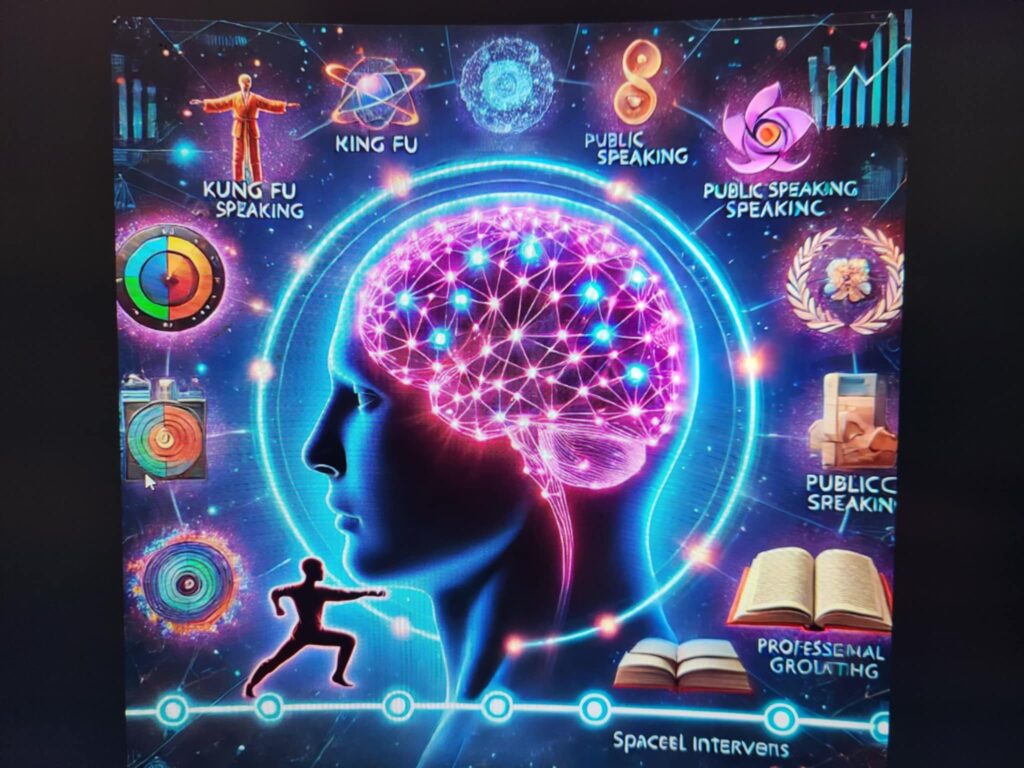When you invest time and energy into learning something new, the last thing you want is to watch it slip away. But without reinforcement, that’s exactly what happens. Whether it’s a Kung Fu form or key points for an important presentation, the brain naturally lets go of what it doesn’t revisit. This isn’t a flaw—it’s simply how memory works.
With spaced repetition, you can turn short-term effort into long-term mastery. By strategically revisiting what you’ve learned over time, you build stronger neural connections and ensure that your hard work sticks.
Why You Forget—and How to Change It
When you cram or repeat something endlessly in one session, your brain treats it as temporary. Without regular reinforcement, information fades—a phenomenon known as the forgetting curve, first identified by psychologist Hermann Ebbinghaus.
Spaced repetition counters this by reintroducing material at just the right time, allowing your brain to solidify the information. The result? You retain knowledge longer and recall it more easily when you need it.
What Does It Look Like?
Spaced repetition isn’t complicated, but it requires intention. Here’s how it works in different contexts:
In Kung Fu: Break forms or techniques into smaller sections. Practice one section today, revisit it two days later, and again a week later. Over time, your movements will flow naturally. Ready to put this method into action? Claim your free private lesson and one week of group classes today!
In Personal Development: Want to improve a skill like public speaking? Focus on one element—such as voice projection—then revisit it periodically until it becomes second nature.
In Academics: Use tools like Anki or Quizlet to review key concepts at timed intervals. This is far more effective than cramming.
In Professional Growth: Preparing for a major project or presentation? Practice key elements in short, focused sessions spaced over days or weeks to refine your skills.
How to Start Using Spaced Repetition
- Start Small: Break your learning into manageable chunks.
- Space It Out: Begin with shorter intervals (e.g., 1 day), then gradually extend them (e.g., 3 days, 7 days).
- Focus on Weak Areas: Concentrate your effort where improvement is needed most.
- Track Your Progress: Use a notebook, planner, or app to log your practice sessions and intervals.
- Be Consistent: The magic lies in sticking to the schedule over time.
Why It Works
Spaced repetition isn’t just a strategy—it’s aligned with how your brain functions. Each time you revisit material, you strengthen the neural pathways associated with it. This makes the information easier to retrieve and apply when it counts.
Logan S. McCarty, a researcher in active learning, explains: “Effective learning is less about how much time you spend and more about the timing and quality of your practice.” By spacing out your efforts, you make every session count.
Why It Matters
Spaced repetition teaches patience, persistence, and the value of intentional effort. It’s a simple yet transformative approach that helps you retain what matters, whether you’re mastering a new skill, preparing for an exam, or striving for personal growth.
To Deepen Your Understanding, Explore These Resources:
Key Articles:
- The Forgetting Curve: How to Retain More of What You Learn
- Memory and Retention: Why Timing Matters
- The Science Behind Spaced Repetition
Recommended Books:
- Make It Stick: The Science of Successful Learning by Peter C. Brown
- Limitless: Upgrade Your Brain and Learn Faster by Jim Kwik
- Atomic Habits by James Clear
- Peak: Secrets from the New Science of Expertise by Anders Ericsson
Start Your Journey Today
Mastery begins with small, consistent steps. Spaced repetition transforms how you approach learning, ensuring that what you practice today stays with you for life.
Ready to elevate your learning journey? Click here to claim your free private lesson and one week of group classes!
Start small. Stay consistent. And watch as spaced repetition turns fleeting effort into lifelong mastery—on the mat, in the classroom, and beyond.
Nakonsy Truong
Assistant Head Instructor
White Dragon of East County



